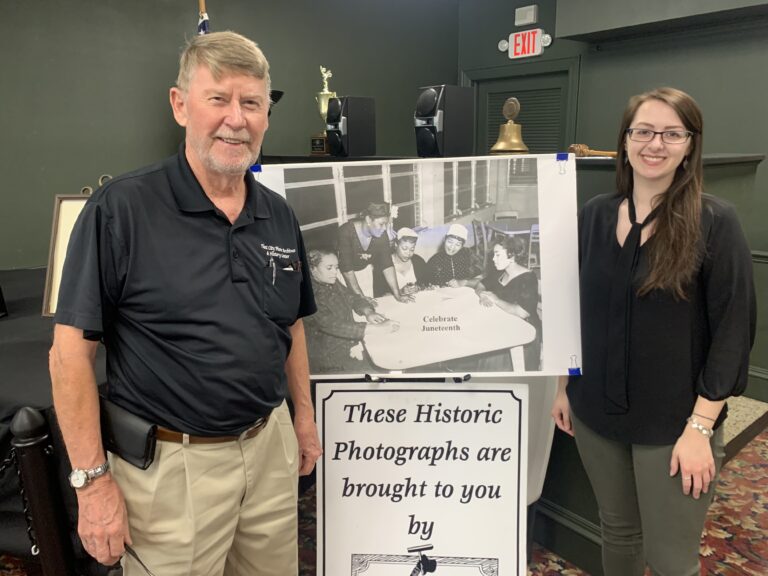
Samantha Poirier has been selected to replace long-serving Executive Director Gil Gott following his upcoming retirement.
The Plant City Photo Archives & History Center has officially named Executive Director Gil Gott’s successor.
Samantha Poirier officially began training under Gott this month and will act as an understudy for a few months before transitioning fully into the role by the end of the year. She previously served as the director of the Leavenworth County Historical Society in Kansas, is a Magna Cum Laude graduate of Western Missouri State University, and of the University of West Florida and receiving the Outstanding Public History Graduate Student Award. She has also worked with the Pensacola Museum of Art and the Florida Public Archaeology Network.
“She’s got a very good educational background, very good work experience, she’s very bright and really knows how to make this work well for the community and that’s one of the things we really look for,” Gott said. “Some people in the history and archives field, they really focus more on what we do and on the archiving of things, but don’t think about the people. What we do is gather information and gather history and then make sure it’s accessible to the public. People come in and we sit down with them and help them find anything they want. We find out the information for that, if we can, and Samantha loves to do that. She has a passion for history and for helping people find out about history. I think It’s going to be a great fit.
Though her introduction to the community is just beginning she’s quickly picked up the ropes at the archives and is spending her day training under Gott’s tutelage. By the time he retires Poirier will be ready to take the helm and help continue to connect people to Plant City’s intricate past.
“From what I’ve seen over the last couple of days that I’ve been here I really think I’ll be continuing the focus on getting more community involvement at the archives,” Poirier said. “I know it’s something they have been pushing for and I’d love to see more of that. There’s also a generational gap in those that do get involved here and I would like to see if we can get more engagement from the younger generations. I think people sometimes struggle with how to connect with history. People are trying to find their personal identities and I truly believe history really helps with that journey. I would love to play a role in helping people fall in love with history here and be that bridge that can help connect them to the knowledge we have here.”
Poirier fell in love with diving into the history of a region as a child. She was born in Oklahoma to a military family and moved eight times before her father retired to Kansas when she was around 11 years old. She said every time they would pick up and move she would suddenly find herself in a new location with an entirely different culture and group of people. It didn’t take long to learn that by delving into the history of her new home she could soon understand it.
“In school I loved learning and reading and got caught up in stories and art,” Poirier said. “I was an art student my entire career and thought I would work in museums. I ended up studying history and focusing on understanding culture and how keeping a detailed account of someone or some place’s history can act as that connector between the past and the present. I would consider myself to be a culture and a people historian and I love being able to take what I learn and put it in terms the general public can understand. That’s what pushed me toward this type of career, whether through writing or exhibits I love people able to create something that people enjoy and want to learn more about.”
Her introduction to Plant City has been an immediate deep dive and Poirier said she’s loved learning about the community’s many layers. History has undoubtedly been made time and again in this strawberry town and the intricate records housed at the Photo Archives & History Center are a treasure trove for those hoping to learn more about the community.
Down the road she said the goal is to have a variety of new programs and experiences for the community to be able to be a part of and she wants to hopefully be able to highlight the accessibility of the wealth of knowledge found at the archives.
“She shares our goal, to have the ability to see how best we can preserve photos and information and how best we can make sure people have access to it,” Gott said. “We focus on making sure our outreach programs are working and if people reach out we respond quickly and help in the best way we can. We want to not just collect history, but make it accessible. And I think she’s going to be a great fit for that.”
